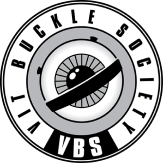HAWK and HARRIER: Phase 3, Multicenter, Randomized, Double-Masked Trials of Brolucizumab for Neovascular Age-Related Macular Degeneration
September 2019
Pravin U. Dugel, MD, Adrian Koh, MD, FRCS, Yuichiro Ogura, MD, Glenn J. Jaffe, MD, Ursula Schmidt-Erfurth, MD, David M. Brown, MD, Andre V. Gomes, MD, PhD, James Warburton, MBBS, Andreas Weichselberger, PhD, Frank G. Holz, MD, on behalf of the HAWK and HARRIER Study Investigators. Ophthalmology. 2019 Apr 12. pii: S0161-6420(18)33018-5. doi: 10.1016/j.ophtha.2019.04.017.
Brolucizumab is a single chain antibody fragment that targets VEGF-A. Because of its low molecular weight, molar concentrations 11-13 times higher than aflibercept can be achieved, which can result in improved tissue penetration, a potentially longer duration of action, and faster systemic clearance. The HAWK and HARRIER studies were head-to-head phase III double masked, multicenter, randomized trials comparing brolucizumab 3 mg (HAWK only) and 6 mg with aflibercept 2 mg. Each arm was treated with a loading dose of consisting of 3 injections at 4 week intervals, then the brolucizumab arms were extended to 12 week dosing, which was shortened to 8 weeks with disease activity, and the aflibercept arm was treated at 8 week intervals for the remainder of the study.
The study was set up as a noninferiority study with the key endpoint being mean best corrected visual acuity (BCVA) with a margin of 4 letters. They also evaluated the percentage of patients maintained on a 12 week dosing interval and anatomic outcomes. Overall, brolucizumab was noninferior to aflibercept in visual function at 48 weeks (HAWK: +6.6 [6 mg] and +6.1 [3 mg] letters with brolucizumab vs. +6.8 letters with aflibercept; HARRIER: +6.9 [brolucizumab 6 mg] vs. +7.6 [aflibercept] letters) and over half of the brolucizumab treated patients were maintained on a 12 week dosing regimen, which is an impressive result.
One notable finding was that at week 16, which is after each group received the same number of injections at 4 week intervals, fewer patients in the brolucizumab 6mg arm had activity when compared to those in the aflibercept arm (HAWK: 24.0% 34.5%; HARRIER: 22.7% vs 32.2%), indicating possible increased potency of brolucizumab.
Another important finding is that most of the patients who were switched from the 12 week to the 8 week dosing interval for brolucizumab were done after the initial loading dose phase at 16 or shortly after at 20 weeks, meaning that early response to treatment is very predictive of treatment course. A very high percentage of patients who made it through 20 weeks remained on 12 week dosing through 48 weeks, which could give retina specialists more confidence in extending intervals sooner after loading doses if there is a good initial response.
Better anatomic outcomes were seen on OCT at week 48 in the brolucizumab arms versus aflibercept. It will be interesting to see if the improved drying effect of brolucizumab has an effect on longer term visual acuity and visual function outcomes. One criticism of the study is the Eylea dosing of every 8 weeks after the initial loading doses; while this is the FDA-approved dosing frequency, in clinical practice it is common to treat more frequently depending on disease activity.
Overall, this is an exciting study and many retina specialists are eager to have this additional anti-VEGF option available for their patients in the coming months.
